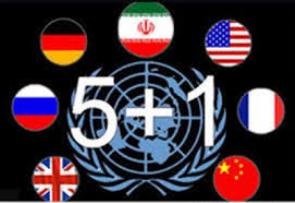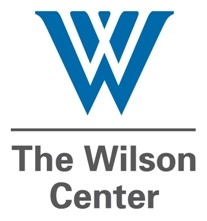The Woodrow Wilson Center, recently chosen as one of the top international think tanks, has followed the Iran nuclear issues closely. Now comes a moment of truth. Policy thinkers discuss contours of a deal, or no deal, and war planners and business interests prepare for consequences

As is often the case in reviewing the depth and breadth of establishment thought on issues of foreign policy, we should proceed with caution. As we consider the analyses and options offered up by U.S. foreign policy experts and commentators inside and outside corridors of power as negotiations with Iran draw to a close, let us remember how many experts were proven far from accurate or reliable as the U.S. commenced policies of war in the Mideast. Since 1990 and the first Iraq war, the U.S. has been at war in the region for over 25 years, in what soon can be called a “30 Year War.”
The failed policies, the flawed intelligence, and the vastly underestimated costs, issues that some are attempting to bring into the equation today, are rarely considered in strategic security discourse. The trillions in costs of war in Afghanistan, Iraq and throughout the region are accrued but yet to be audited (a trillion here and a trillion there added to the nation’s debt continuing upward). The risks of overreach and additional costs on top of costs being carried forward are rarely discussed in think tank assessments. Yet these costs need to be considered. The direct costs and indirect / collateral / opportunity costs, human costs and costs to the nation’s standing, the blowback, linkage, reciprocation and escalation costs need to be assessed and considered as serious threat vectors.
Yet we are witnessing threats growing with nuclear proliferation added to the equation as U.S., Russian and Chinese actions rekindle nuclear weapons programs amid a breakdown of nuclear arms control efforts and resulting build-up and modernization of nuclear forces. It is against a backdrop of proliferation that the negotiations with Iran go forward.
Is there an opportunity here to leverage an Iranian nuclear agreement, as the Wilson Center speaks of below (pt. 5) to reduce the pressures toward nuclear weapons actions and counteractions?
Or will an unsuccessful P5+1 Iranian outcome now, or at a later date, produce more escalation, proliferation and a wider regional war that could lead to greater costs and U.S., Russian, Chinese nuclear arms build-up?
The forces pushing for wider war are considerable. More war spending, more costs, more threat multiplier discussions, a multi-lateral world is growing hotter.
The unintended consequences of war with Iran are rarely considered by any think tank. Let us consider it — Iran is no Iraq. It would be far from “appeasement” to consider realistic options to a another war, one that draws in Iran’s energy partners, Russia and China, who have deferred to U.S. policies so far regarding sanctions on Iran, but have made it known that their national security and economic interests are being put at risk.
Another war, its costs and damages, direct and indirect, foreseen and unforeseen, must be taken into account.
It’s time for international-facing think tanks to look more closely at the costs of war. The U.S. think tanks need to look more closely at the nation’s economy and its needs. The Pentagon has delivered an updated National Military Strategy that envisions in effect perpetual war mobilization. Can the nation afford constant war spending over time? Other nations have failed attempting to support what is ultimately unsupportable. Is it time to ask what might called a patriotic question, one we recall a famous U.S. general asking, a general who became President Eisenhower. It’s a question worth asking again. He was speaking to the nation’s needs in his final speech…
Perhaps the benefits of peace should be added to the think tank assessments.
-=-=-=-=-=-=-=-=-=-=-=-=-=-=-=-=-=-=-=-=-=-=-=-=-=-=-=-=-=-=-
U.S. STRATEGY AFTER THE IRAN DEAL:
Seizing Opportunities and Managing Risks
June 2015
This report examines the key opportunities and risks the United States will face after a deal and lays out a framework that seeks to maximize the upsides of a diplomatic breakthrough with Iran while protecting against the negative implications. It is part of a series of studies conducted by the Center for a New American Security examining the aftermath of an agreement and potential policy implications for the United States.
The report only lays out the outlines of a strategy based on six central pillars:
1. Strengthen the nuclear agreement by taking steps outside of the P5+1 negotiations with Iran to set conditions for effective long-term enforcement and implementation.
2. Cooperate with Iran on issues of common interest both to stabilize the Middle East and increase the likelihood of a more moderate and cooperative Iran.
3. More forcefully counter Iranian actions that are against U.S. interests, most notably their support for surrogates and proxies in the Middle East.
4. Maintain and deepen U.S. commitments to regional partners to deter Iranian aggression and dissuade American partners from taking destabilizing steps.
5. Leverage the agreement to strengthen nonproliferation norms and dissuade states from reacting to the deal by pursuing similar domestic enrichment capabilities.
6. Use the agreement to refocus on Asia and Europe and increase U.S. leverage with Russia and China.
If the P5+1 and Iran successfully complete an agreement… CNAS will produce a final study that will fully flesh out this framework and include a series of specific policy recommendations associated with each pillar.
○ ○ ○ ○ ○ ○ ○ ○ ○ ○ ○ ○
Via Wall Street Journal, July 4, 2015 / Iranian Official Sees ‘Opportunities’ for Better Ties After a Nuclear Deal
-=-=-=-=-=-=-=-=-=-=-=-=-=-=-=-=-=-=-=-=-=-=-=-=-=-=-=-=-=-=-
What If…
Via Los Angeles Times, July 3, 2015 / U.S. stockpiles powerful bunker-buster bombs in case Iran nuclear talks fail
Via Wall Street Journal, June 30, 2015 / What If No Agreement Is Reached on Iran’s Nuclear Program?
November 2012
“A dynamic of escalation, action, and counteraction could produce serious unintended consequences that would … lead, potentially, to all-out regional war…”
http://www.wilsoncenter.org/event/weighing-the-benefits-and-costs-military-action-against-iran
Weighing Benefits and Costs of Military Action against Iran
American Presidents have proclaimed for over a decade they would “take no option off the table” to stop Iran from building a nuclear bomb—leaving the door open for military action against Iran under certain circumstances. THE PURPOSE OF THIS PAPER At a time when debate on this critical issue is often driven by politics and based on unexamined assumptions about the ability of military action to achieve U.S. objectives, this paper seeks to provide a foundation for clear thinking about the potential use of force against Iran. The paper’s authors and signers, a bipartisan group of senior national security experts, recognize that this debate is part of a broader conversation about U.S. policy toward Iran. But we believe that it will be impossible to make a rational assessment of the role of military force in any overall Iran strategy, without first carefully assessing the likely benefits and costs of military action.



